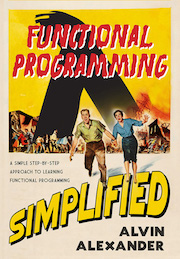JMeter example source code file (AbstractVisualizer.java)
The JMeter AbstractVisualizer.java source code/*
* Licensed to the Apache Software Foundation (ASF) under one or more
* contributor license agreements. See the NOTICE file distributed with
* this work for additional information regarding copyright ownership.
* The ASF licenses this file to You under the Apache License, Version 2.0
* (the "License"); you may not use this file except in compliance with
* the License. You may obtain a copy of the License at
*
* http://www.apache.org/licenses/LICENSE-2.0
*
* Unless required by applicable law or agreed to in writing, software
* distributed under the License is distributed on an "AS IS" BASIS,
* WITHOUT WARRANTIES OR CONDITIONS OF ANY KIND, either express or implied.
* See the License for the specific language governing permissions and
* limitations under the License.
*
*/
package org.apache.jmeter.visualizers.gui;
import java.awt.Component;
import java.awt.Container;
import java.awt.event.ActionEvent;
import java.awt.event.ActionListener;
import javax.swing.JButton;
import javax.swing.JCheckBox;
import javax.swing.JLabel;
import javax.swing.event.ChangeEvent;
import javax.swing.event.ChangeListener;
import org.apache.jmeter.gui.GuiPackage;
import org.apache.jmeter.gui.SavePropertyDialog;
import org.apache.jmeter.gui.UnsharedComponent;
import org.apache.jmeter.gui.util.FilePanel;
import org.apache.jmeter.reporters.AbstractListenerElement;
import org.apache.jmeter.reporters.ResultCollector;
import org.apache.jmeter.samplers.Clearable;
import org.apache.jmeter.samplers.SampleSaveConfiguration;
import org.apache.jmeter.testelement.TestElement;
import org.apache.jmeter.util.JMeterUtils;
import org.apache.jmeter.visualizers.Visualizer;
import org.apache.jorphan.gui.ComponentUtil;
import org.apache.jorphan.logging.LoggingManager;
import org.apache.log.Logger;
/**
* This is the base class for JMeter GUI components which can display test
* results in some way. It provides the following conveniences to developers:
* <ul>
* <li>Implements the
* {@link org.apache.jmeter.gui.JMeterGUIComponent JMeterGUIComponent} interface
* that allows your Gui visualizer to "plug-in" to the JMeter GUI environment.
* Provides implementations for the following methods:
* <ul>
* <li>{@link org.apache.jmeter.gui.JMeterGUIComponent#configure(TestElement) configure(TestElement)}.
* Any additional parameters of your Visualizer need to be handled by you.</li>
* <li>{@link org.apache.jmeter.gui.JMeterGUIComponent#createTestElement() createTestElement()}.
* For most purposes, the default
* {@link org.apache.jmeter.reporters.ResultCollector ResultCollector} created
* by this method is sufficient.</li>
* <li>{@link org.apache.jmeter.gui.JMeterGUIComponent#getMenuCategories getMenuCategories()}.
* To control where in the GUI your visualizer can be added.</li>
* <li>{@link org.apache.jmeter.gui.JMeterGUIComponent#modifyTestElement(TestElement) modifyTestElement(TestElement)}.
* Again, additional parameters you require have to be handled by you.</li>
* <li>{@link org.apache.jmeter.gui.JMeterGUIComponent#createPopupMenu() createPopupMenu()}.
* </ul>
* </li>
* <li>Provides convenience methods to help you make a JMeter-compatible GUI:
* <ul>
* <li>{@link #makeTitlePanel()}. Returns a panel that includes the name of
* the component, and a FilePanel that allows users to control what file samples
* are logged to.</li>
* <li>{@link #getModel()} and {@link #setModel(ResultCollector)} methods for
* setting and getting the model class that handles the receiving and logging of
* sample results.</li>
* </ul>
* </li>
* </ul>
* For most developers, making a new visualizer is primarly for the purpose of
* either calculating new statistics on the sample results that other
* visualizers don't calculate, or displaying the results visually in a new and
* interesting way. Making a new visualizer for either of these purposes is easy -
* just extend this class and implement the
* {@link org.apache.jmeter.visualizers.Visualizer#add add(SampleResult)}
* method and display the results as you see fit. This AbstractVisualizer and
* the default
* {@link org.apache.jmeter.reporters.ResultCollector ResultCollector} handle
* logging and registering to receive SampleEvents for you - all you need to do
* is include the JPanel created by makeTitlePanel somewhere in your gui to
* allow users set the log file.
* <p>
* If you are doing more than that, you may need to extend
* {@link org.apache.jmeter.reporters.ResultCollector ResultCollector} as well
* and modify the {@link #configure(TestElement)},
* {@link #modifyTestElement(TestElement)}, and {@link #createTestElement()}
* methods to create and modify your alternate ResultCollector. For an example
* of this, see the
* {@link org.apache.jmeter.visualizers.MailerVisualizer MailerVisualizer}.
* <p>
*
*/
public abstract class AbstractVisualizer
extends AbstractListenerGui
implements Visualizer, ChangeListener, UnsharedComponent, Clearable
{
private static final long serialVersionUID = 240L;
/** Logging. */
private static final Logger log = LoggingManager.getLoggerForClass();
/** File Extensions */
private static final String[] EXTS = { ".jtl", ".csv" }; // $NON-NLS-1$ $NON-NLS-2$
/** A panel allowing results to be saved. */
private FilePanel filePanel;
/** A checkbox choosing whether or not only errors should be logged. */
private JCheckBox errorLogging;
/* A checkbox choosing whether or not only successes should be logged. */
private JCheckBox successOnlyLogging;
private JButton saveConfigButton;
protected ResultCollector collector = new ResultCollector();
protected boolean isStats = false;
public AbstractVisualizer() {
super();
// errorLogging and successOnlyLogging are mutually exclusive
errorLogging = new JCheckBox(JMeterUtils.getResString("log_errors_only")); // $NON-NLS-1$
errorLogging.addActionListener(new ActionListener(){
public void actionPerformed(ActionEvent e) {
if (errorLogging.isSelected()) {
successOnlyLogging.setSelected(false);
}
}
});
successOnlyLogging = new JCheckBox(JMeterUtils.getResString("log_success_only")); // $NON-NLS-1$
successOnlyLogging.addActionListener(new ActionListener(){
public void actionPerformed(ActionEvent e) {
if (successOnlyLogging.isSelected()) {
errorLogging.setSelected(false);
}
}
});
saveConfigButton = new JButton(JMeterUtils.getResString("config_save_settings")); // $NON-NLS-1$
saveConfigButton.addActionListener(new ActionListener() {
public void actionPerformed(ActionEvent e) {
SavePropertyDialog d = new SavePropertyDialog(
GuiPackage.getInstance().getMainFrame(),
JMeterUtils.getResString("sample_result_save_configuration"), // $NON-NLS-1$
true, collector.getSaveConfig());
d.pack();
ComponentUtil.centerComponentInComponent(GuiPackage.getInstance().getMainFrame(), d);
d.setVisible(true);
}
});
filePanel = new FilePanel(JMeterUtils.getResString("file_visualizer_output_file"), EXTS); // $NON-NLS-1$
filePanel.addChangeListener(this);
filePanel.add(new JLabel(JMeterUtils.getResString("log_only"))); // $NON-NLS-1$
filePanel.add(errorLogging);
filePanel.add(successOnlyLogging);
filePanel.add(saveConfigButton);
}
public boolean isStats() {
return isStats;
}
/**
* Gets the checkbox which selects whether or not only errors should be
* logged. Subclasses don't normally need to worry about this checkbox,
* because it is automatically added to the GUI in {@link #makeTitlePanel()},
* and the behavior is handled in this base class.
*
* @return the error logging checkbox
*/
protected JCheckBox getErrorLoggingCheckbox() {
return errorLogging;
}
/**
* Provides access to the ResultCollector model class for extending
* implementations. Using this method and setModel(ResultCollector) is only
* necessary if your visualizer requires a differently behaving
* ResultCollector. Using these methods will allow maximum reuse of the
* methods provided by AbstractVisualizer in this event.
*/
protected ResultCollector getModel() {
return collector;
}
/**
* Gets the file panel which allows the user to save results to a file.
* Subclasses don't normally need to worry about this panel, because it is
* automatically added to the GUI in {@link #makeTitlePanel()}, and the
* behavior is handled in this base class.
*
* @return the file panel allowing users to save results
*/
protected Component getFilePanel() {
return filePanel;
}
/**
* Sets the filename which results will be saved to. This will set the
* filename in the FilePanel. Subclasses don't normally need to call this
* method, because configuration of the FilePanel is handled in this base
* class.
*
* @param filename
* the new filename
*
* @see #getFilePanel()
*/
public void setFile(String filename) {
// TODO: Does this method need to be public? It isn't currently
// called outside of this class.
filePanel.setFilename(filename);
}
/**
* Gets the filename which has been entered in the FilePanel. Subclasses
* don't normally need to call this method, because configuration of the
* FilePanel is handled in this base class.
*
* @return the current filename
*
* @see #getFilePanel()
*/
public String getFile() {
// TODO: Does this method need to be public? It isn't currently
// called outside of this class.
return filePanel.getFilename();
}
/**
* Invoked when the target of the listener has changed its state. This
* implementation assumes that the target is the FilePanel, and will update
* the result collector for the new filename.
*
* @param e
* the event that has occurred
*/
public void stateChanged(ChangeEvent e) {
log.debug("getting new collector");
collector = (ResultCollector) createTestElement();
collector.loadExistingFile();
}
/* Implements JMeterGUIComponent.createTestElement() */
public TestElement createTestElement() {
if (collector == null) {
collector = new ResultCollector();
}
modifyTestElement(collector);
return (TestElement) collector.clone();
}
/* Implements JMeterGUIComponent.modifyTestElement(TestElement) */
public void modifyTestElement(TestElement c) {
configureTestElement((AbstractListenerElement) c);
if (c instanceof ResultCollector) {
ResultCollector rc = (ResultCollector) c;
rc.setErrorLogging(errorLogging.isSelected());
rc.setSuccessOnlyLogging(successOnlyLogging.isSelected());
rc.setFilename(getFile());
collector = rc;
}
}
/* Overrides AbstractJMeterGuiComponent.configure(TestElement) */
@Override
public void configure(TestElement el) {
super.configure(el);
setFile(el.getPropertyAsString(ResultCollector.FILENAME));
ResultCollector rc = (ResultCollector) el;
errorLogging.setSelected(rc.isErrorLogging());
successOnlyLogging.setSelected(rc.isSuccessOnlyLogging());
if (collector == null) {
collector = new ResultCollector();
}
collector.setSaveConfig((SampleSaveConfiguration) rc.getSaveConfig().clone());
}
/**
* This provides a convenience for extenders when they implement the
* {@link org.apache.jmeter.gui.JMeterGUIComponent#createTestElement()}
* method. This method will set the name, gui class, and test class for the
* created Test Element. It should be called by every extending class when
* creating Test Elements, as that will best assure consistent behavior.
*
* @param mc
* the TestElement being created.
*/
protected void configureTestElement(AbstractListenerElement mc) {
// TODO: Should the method signature of this method be changed to
// match the super-implementation (using a TestElement parameter
// instead of AbstractListenerElement)? This would require an
// instanceof check before adding the listener (below), but would
// also make the behavior a bit more obvious for sub-classes -- the
// Java rules dealing with this situation aren't always intuitive,
// and a subclass may think it is calling this version of the method
// when it is really calling the superclass version instead.
super.configureTestElement(mc);
mc.setListener(this);
}
/**
* Create a standard title section for JMeter components. This includes the
* title for the component and the Name Panel allowing the user to change
* the name for the component. The AbstractVisualizer also adds the
* FilePanel allowing the user to save the results, and the error logging
* checkbox, allowing the user to choose whether or not only errors should
* be logged.
* <p>
* This method is typically added to the top of the component at the
* beginning of the component's init method.
*
* @return a panel containing the component title, name panel, file panel,
* and error logging checkbox
*/
@Override
protected Container makeTitlePanel() {
Container panel = super.makeTitlePanel();
// Note: the file panel already includes the error logging checkbox,
// so we don't have to add it explicitly.
panel.add(getFilePanel());
return panel;
}
/**
* Provides extending classes the opportunity to set the ResultCollector
* model for the Visualizer. This is useful to allow maximum reuse of the
* methods from AbstractVisualizer.
*
* @param collector
*/
protected void setModel(ResultCollector collector) {
this.collector = collector;
}
@Override
public void clearGui(){
super.clearGui();
filePanel.clearGui();
}
}
Other JMeter examples (source code examples)Here is a short list of links related to this JMeter AbstractVisualizer.java source code file: |
 The search page
The search page Other JMeter source code examples at this package level
Other JMeter source code examples at this package level Click here to learn more about this project
Click here to learn more about this project
